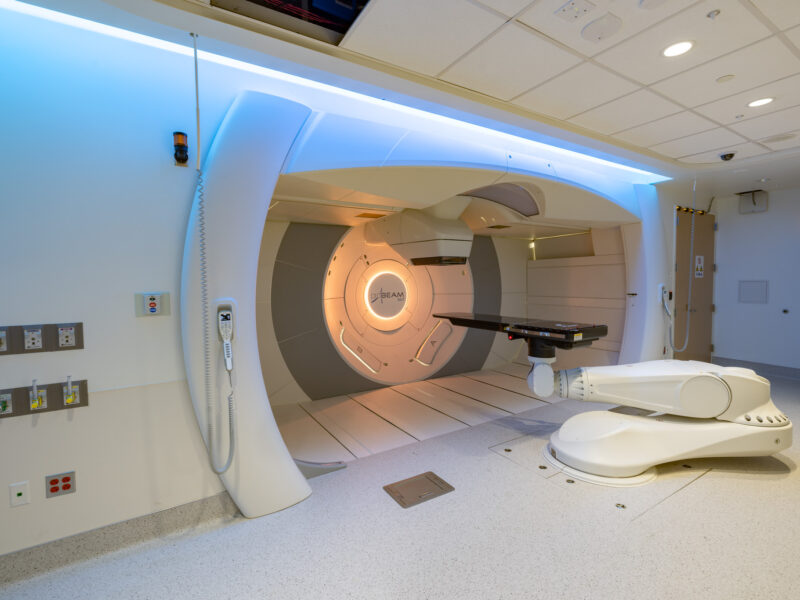Exploring the RNA Cargo of Extracellular Vesicles in Malignant Pediatric Brain Tumors
Exploring the RNA Cargo of Extracellular Vesicles in Malignant Pediatric Brain Tumors https://pediatricsnationwide.org/wp-content/themes/corpus/images/empty/thumbnail.jpg 150 150 JoAnna Pendergrass, DVM JoAnna Pendergrass, DVM https://pediatricsnationwide.org/wp-content/uploads/2021/03/pendergrass_01.jpg- March 03, 2022
- JoAnna Pendergrass, DVM
The RNA cargo within the extracellular vesicles of medulloblastoma and diffuse infiltrative pontine glioma can provide valuable insight into diagnosing and treating these malignant pediatric brain tumors.
Recent studies have shed light on extracellular vesicles’ ability to use their cargo, which includes small noncoding RNA (ncRNA), to facilitate cell-to-cell communication. Extracellular vesicles (EVs) derived from cancer cells have demonstrated a role in human cancer development.
To date, though, little research has been done on the role of EVs in pediatric brain tumors.
In the first study of its kind, Setty Magaña, MD, PhD, co-director of the Neuroimmunology Program at Nationwide Children’s Hospital, and her research team isolated and characterized EVs in medulloblastoma (MB) and diffuse infiltrative pontine glioma (DIPG). Dr. Magaña notes that their findings, recently published in the Journal of Neuro-Oncology, indicate that “EVs are novel mediators of intracellular crosstalk and biomarkers in pediatric brain tumors.”
MB and DIPG are malignant and, particularly in the case of DIPG, often fatal brain tumors in pediatric patients. The study and antemortem diagnosis of DIPG is especially challenging because of the difficulty in obtaining tissue from this infiltrative brainstem glioma.
The research team first cultured surgically resected tissue of each tumor type from pediatric patients to derive 7 cell lines (4 MB cell lines, 3 DIPG cell lines). All but two cell lines were acquired in collaboration with David Daniels, MD, PhD, a pediatric neurosurgeon at the Mayo Clinic. Michelle Monje, MD, PhD, provided the research team with autopsy samples for the remaining two DIPG cell lines. Clinical features such as patient demographics and cancer treatments were documented. EVs that were secreted from the cells in the culture media were isolated.
Next, the team isolated and sequenced the RNA within the EVs and their parent cells, with a focus on microRNAs (miRNAs), a subtype of small ncRNAs that have garnered much interest as diagnostic and prognostic biomarkers in a variety of diseases. Several analyses were performed to compare miRNA between the EVs of MB and DIPG, as well as between the EVs and their parent cells.
Not unexpectedly, the composition of EV-associated miRNAs differed between MB and DIPG due to their distinct pathobiology. However, one of the most informative aspects of this study was not the different miRNAs but the shared miRNAs between MB and DIPG. “The reason for this is because much more is known about miRNAs in MB than DIPG. Therefore, by comparing the less well-characterized tumor (DIPG) to the more well-characterized tumor (MB), our study provides novel insights into the potential role of miRNAs in DIPG pathogenesis,” says Dr. Magaña.
Notably, the miRNAs also differed between the parental cell of origin and the secreted EVs, indicating targeted, tumor-specific cargo loading of the EVs. “Tumor cells use a selective process to determine which miRNAs get packed into the EVs,” Dr. Magaña explains. “This allows them to metastasize and evade the immune system.”
After comparing the miRNA cargo within the EVs, the research team sought to predict the gene targets of the miRNA and what cancer-related pathways those genes might be involved in. Some of the targets were involved in cancer pathways related to cell proliferation and cell-to-cell communication. Interestingly, the EVs and their parent cells differed in their gene targets, again supporting targeted loading of miRNAs into tumor EVs.
In addition to miRNA, the EVs also contained Y RNA, another class of less well-studied ncRNA. Dr. Magaña notes that their study was the first to implicate Y RNAs in pediatric brain tumor pathogenesis, further expanding the treatment and genetic landscape of these tumors and providing insight into brain tumor pathogenesis. Y RNAs, she explains, can help identify new potential therapeutic targets.
Given these study findings, Dr. Magaña’s next research step is to isolate EV-associated miRNA from pediatric patients’ blood samples, rather than tumor tissue.
“EVs can serve as ‘liquid biopsies’ for brain tumors, thereby obviating the need for biopsies,” she says. “Identifying the miRNA within EVs from the blood can provide insight into diagnostic and prognostic indicators.”
Reference
Magaña SM, Peterson TE, Evans JE, Decker PA, Simon V, Eckel-Passow JE, Daniels DJ, Parney IF. Pediatric brain tumor cell lines exhibit miRNA-depleted, Y RNA-enriched extracellular vesicles. Journal of Neuro-Oncology. 2022 Jan;156(2):269-279.
Image credit: Adobe Stock
About the author
JoAnna Pendergrass, DVM, is a veterinarian and freelance medical writer in Atlanta, GA. She received her veterinary degree from the Virginia-Maryland College of Veterinary Medicine and completed a 2-year postdoctoral research fellowship at Emory University’s Yerkes Primate Research Center before beginning her career as a medical writer.
As a freelance medical writer, Dr. Pendergrass focuses on pet owner education and health journalism. She is a member of the American Medical Writers Association and has served as secretary and president of AMWA’s Southeast chapter.
In her spare time, Dr. Pendergrass enjoys baking, running, and playing the viola in a local community orchestra.
-
JoAnna Pendergrass, DVMhttps://pediatricsnationwide.org/author/joanna-pendergrass-dvm/
-
JoAnna Pendergrass, DVMhttps://pediatricsnationwide.org/author/joanna-pendergrass-dvm/
-
JoAnna Pendergrass, DVMhttps://pediatricsnationwide.org/author/joanna-pendergrass-dvm/
-
JoAnna Pendergrass, DVMhttps://pediatricsnationwide.org/author/joanna-pendergrass-dvm/










